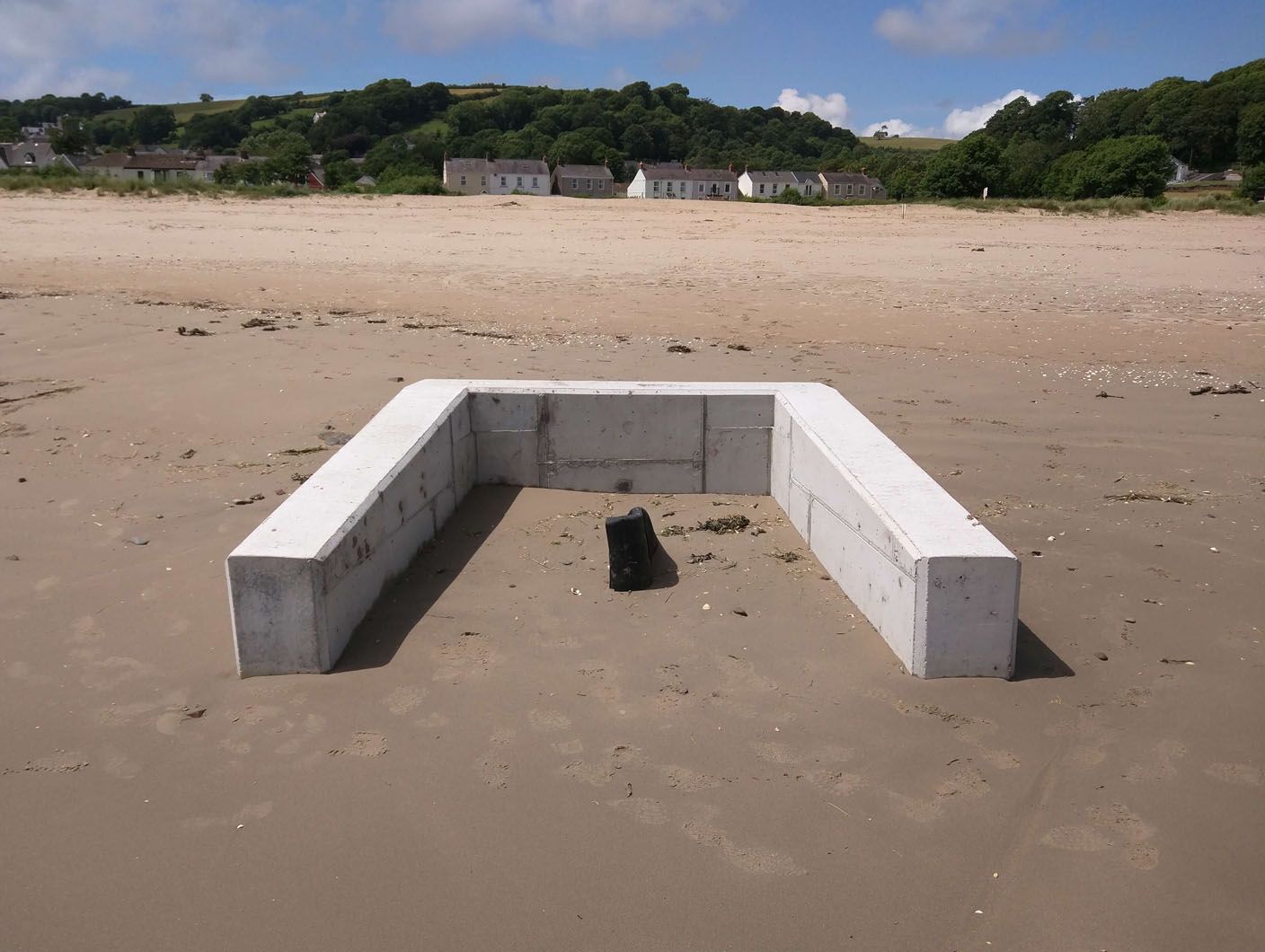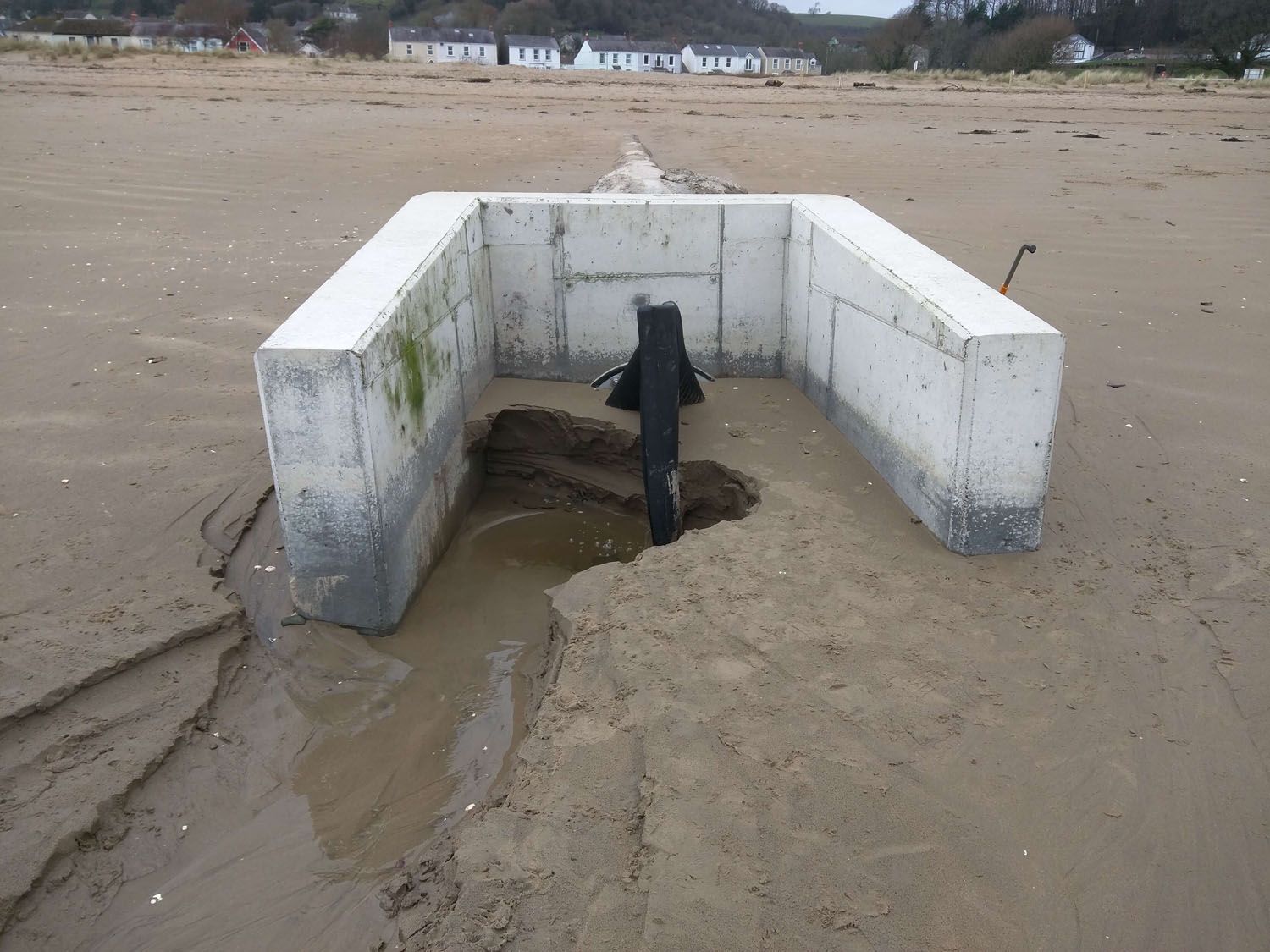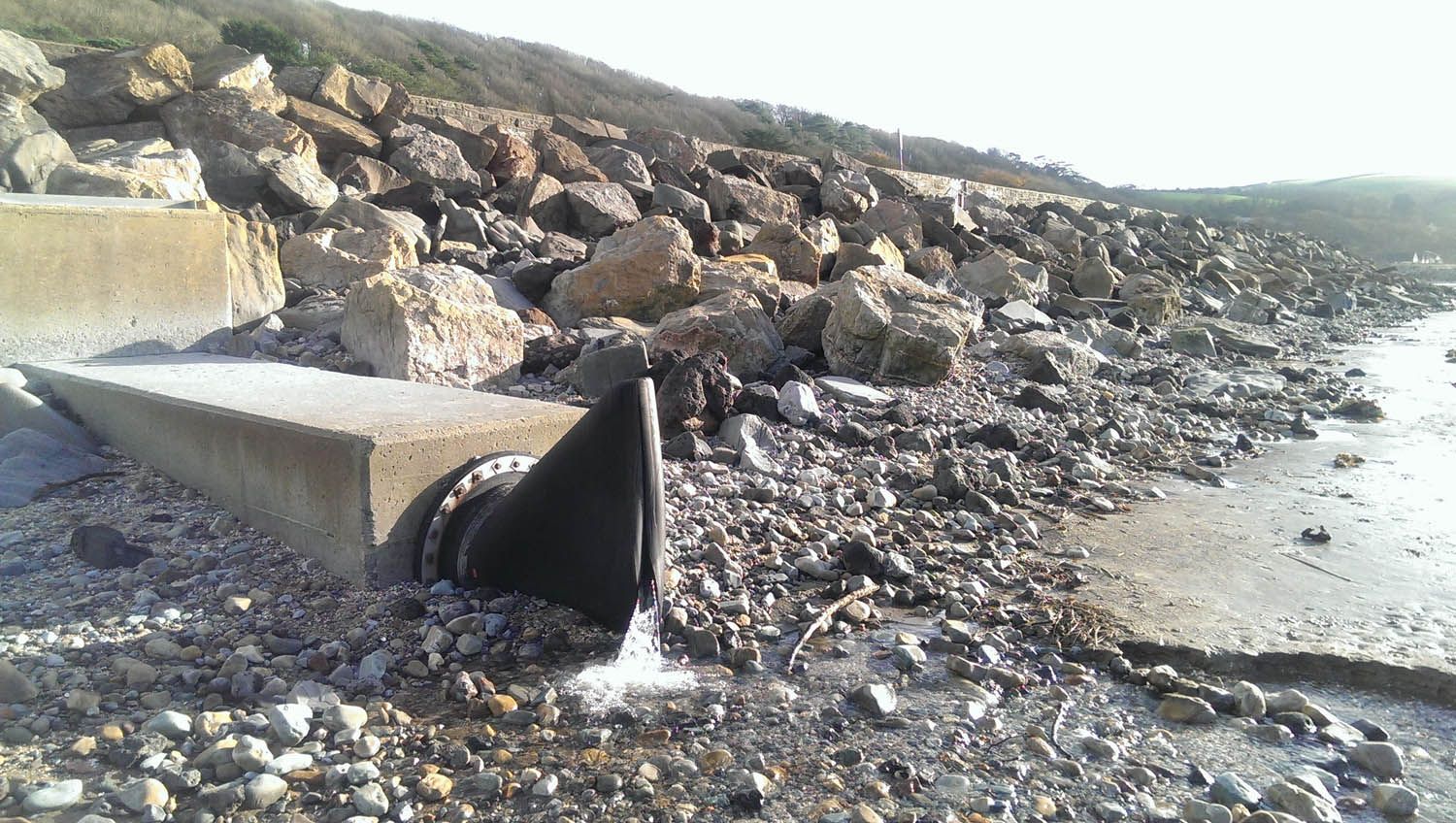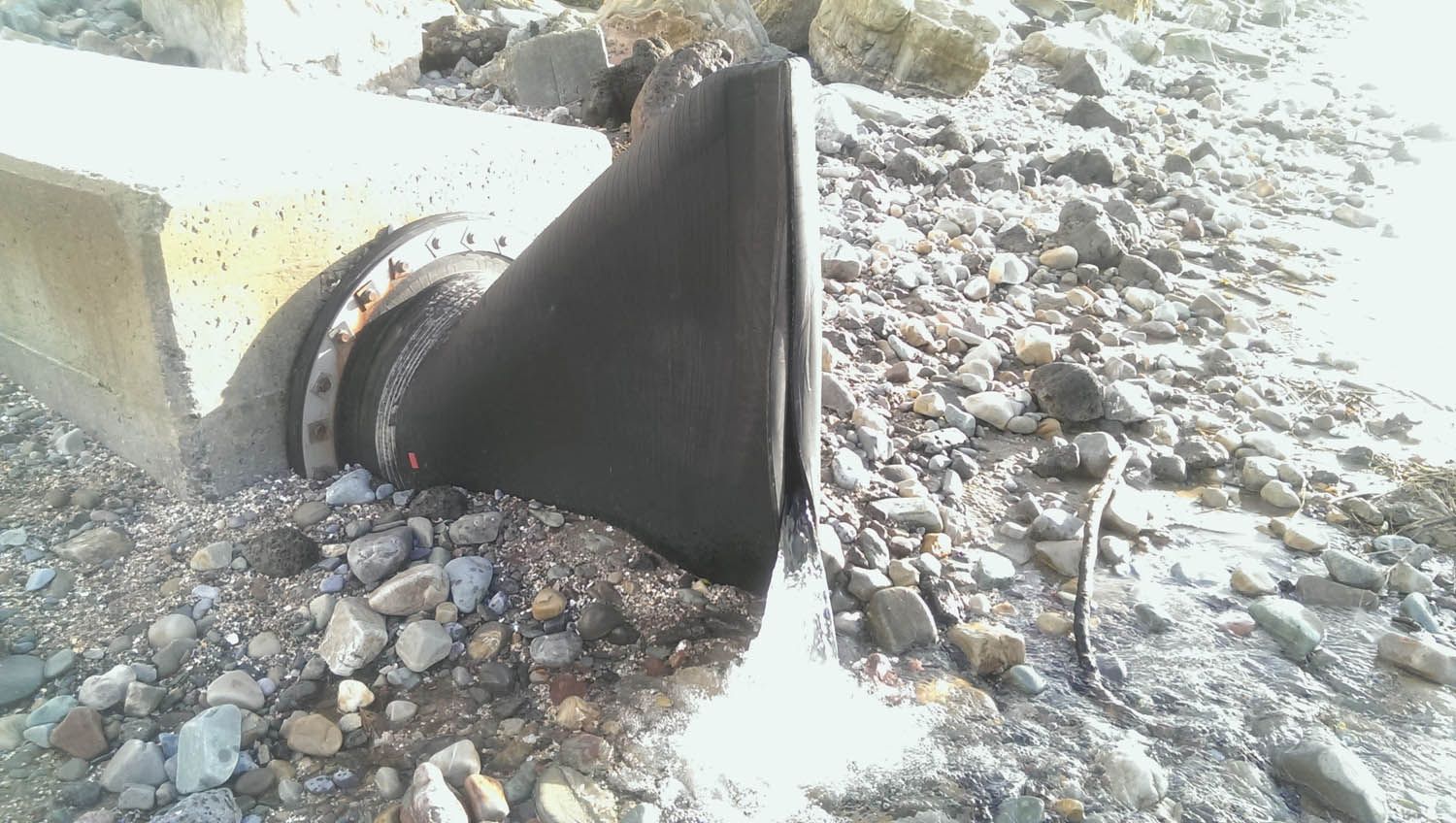


Traditional flap valves on outfalls located in tidal areas suffer from being buried on a regular basis and thus not working. Tideflex duckbill valves are uniquely suited to this environment as they are self-clearing and flexible. Many outfalls on the coasts of Wales, such as in the Towy River estuary, benefit from the use of Tideflex check valves.
Project Details
Client: Carmarthenshire County Council
Design details: DN225 & DN600 valves on outfalls on the beach/estuary
Coastal and river outfall pipes can be partially or completely buried by sand, shingle and mud. These materials can be deposited in a single tide or change with river currents so planned clearance is of little value.
Traditional flap valves will not work well in these applications. In many cases, the pipes are left open by a jammed valve and silt is accumulated inside the pipe preventing flow, even though the flap valve itself has been washed clear by subsequent tides or currents.
Tideflex all rubber check valves are an excellent alternative to flap valves for these outfall applications. In the photos above, it can be seen how the 600mm Tideflex valve on Llansteffan Beach has passively cleared itself after being half-buried in tightly packed sand. The elastomer construction is similar to a truck tyre and delivers a long service life with no required maintenance. Currently, there are valves in service since 1984 and we have many marine installations that are over 25 years in service.
In addition to self clearing, there is no corrosion in salt water, no freezing in winter and no sticking open or shut, no metal theft and no unsightly lubricating hydrocarbons are deposited into the water.
Tideflex valves operate on differential pressure, forward flow opens the valve and reverse flow/backpressure seals the valve. The passive valve operation requires no external energy, just 25-40mm of water head differential can open the valve, draining the line down to low tide level.
Submerged operation is slightly more efficient than free discharge, as the valve operates on differential pressure, it will continue to discharge when submerged, as long as the level inside the pipe is higher than the receiving water.
This means that the Tideflex valves are never "tide locked" and maximum flows are obtained from upstream attenuation on each tide cycle. The valves are flowing whenever the level inside the pipe is higher than the level outside.
At Llansteffan, the local authority chose Tideflex based on previous experience with a Tideflex DN600 valve on the opposite bank of the Towy river at Ferryside. The beach is very dynamic due to the tide and river and this valve had worked well for over a decade. In the photos below you can see the location where this valve has been working without problems and without maintenance efforts required.
Contact us for more information on how our experience and expertise can benefit your drainage project.



Buried Tideflex Valves Can Self Clear